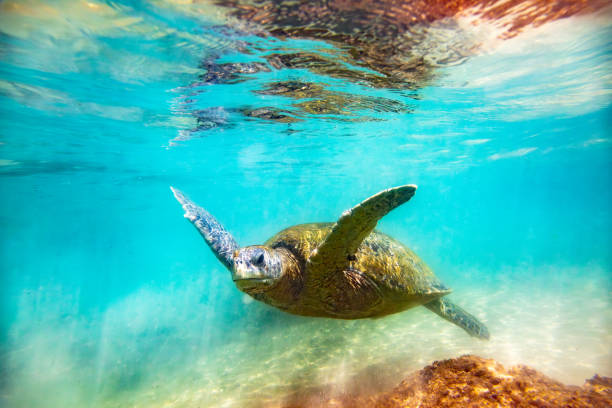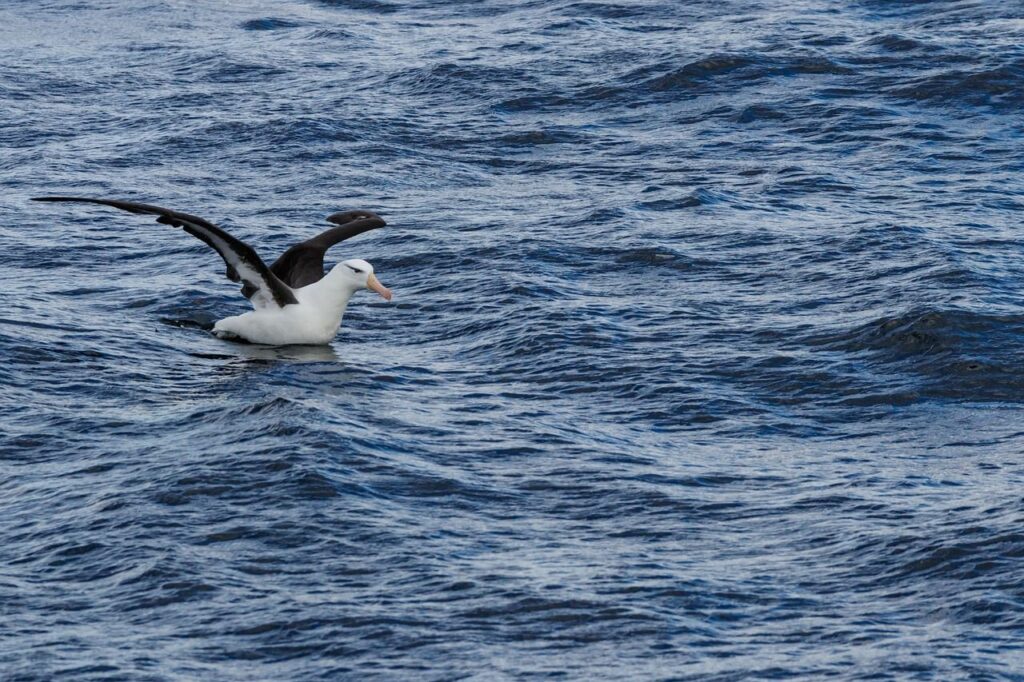
5 Wonderful Adaptations: How Marine Life Thrives in Seawater
The huge expanse of our planet’s seas, which span more than 71% of its surface, conceals a hidden world that is alive with a wide variety of living forms. Unlike the freshwater settings that we frequently come with, these salty seas present a one-of-a-kind challenge for creatures, which is to keep a delicate balance of water and salts within their bodies. Marine life has developed extraordinary adaptations as a result of their ongoing struggle against the osmotic pressure that is generated by saltwater. These adaptations have enabled marine life to not only survive but also flourish in this harsh environment.
This blog article looks into the intriguing realm of osmoregulation, examining the various tactics that marine life utilizes in order to handle the obstacles that come with high salinity. Our voyage will take us through the complex mechanics of salt glands, we will be amazed by the specific adaptations of kidneys and excretory organs, and we will learn about the cellular modifications that enable extremophiles to exist in the most severe environments. In addition to this, we will investigate the behavioral methods that different animals use to control their exposure to different salinity levels, as well as the resilience that intertidal creatures demonstrate when they are subjected to periods of desiccation.
The Osmotic Challenge: Maintaining Balance in a Salty World
Marine life has a severe obstacle in the form of osmosis, which is the natural tendency of water to migrate from regions with low solute concentration to regions with high solute concentration. The high concentration of dissolved salts in saltwater, especially sodium and chloride ions, provides a situation in which water has a natural tendency to flow out of the cells of the organism and into the seawater that is around it. An electrolyte imbalance, dehydration, and finally death are all potential outcomes of this situation.
Osmoregulation is the aggregate name for the different processes that marine life has developed in order to combat the continual osmotic pressure that they are subjected to. In order to guarantee that cells and organs are able to carry out their functions in an appropriate manner, these systems operate to keep the internal environment, which is referred to as homeostasis, within a specific range.
Osmoregulation in Action: Diverse Strategies for Different Life Forms
1. Marine Teleost Fish: Masters of Adaptation
The osmoregulation of marine teleost fish, such as the ever-popular salmon, is one of the most convincing instances of osmoregulation. Throughout their whole life cycle, these extraordinary organisms have a remarkable capacity to travel between habitats that are freshwater and saltwater. It is during this transition from freshwater to seawater that their gills go through a series of physiological modifications that allow them to actively take in ions from the water around them. In this way, the natural tendency of water to flow out of their cells is counteracted, which helps to preserve the essential equilibrium of water and salts that exists inside their physiques. In contrast, as they transition from saltwater to freshwater, they switch gears and expel excess ions through their gills. This prevents them from becoming waterlogged and preventing disease.
2. Seabirds: Equipped with Salt Glands for Efficient Excretion
One of the most difficult challenges that seabirds, such as the majestic albatross and the ever-hungry pelican, must contend with is the fact that their diet frequently consists of fish, which are themselves heavy in salt. These birds have specific salt glands positioned close to their eyes, which allow them to deal with the continual input of salt that they are exposed to. These glands perform their role by actively secreting a concentrated salt solution, which efficiently removes excess salt from the circulation and prevents the buildup of salt that might be detrimental. Because of this adaptation, they are able to keep their internal salt balance in check and flourish in the saltwater environment in which they live.

3. Marine Reptiles: Kidneys Tailored for a Salty Life
Marine reptiles, like the wonderful sea turtles, have adapted their kidneys to effectively deal with the demands of a saline environment. Not only do these outstanding organs filter waste materials, but they also play an important part in the process of osmoregulation. In order to eliminate excess salt, sea turtles have salt glands located close to their eyes, which are comparable to the glands seen in seabirds. A further adaptation that is essential for traveling the wide expanses of the ocean is that their kidneys have been particularly modified to concentrate urine. This allows them to store valuable freshwater in their bodies and reduces the amount of water that is lost.
4. Crustaceans: Specialized Organs for Navigating Fluctuating Salinity
An other noteworthy adaptation for coping with changes in salinity is displayed by crustaceans, such as the ubiquitous fiddler crab. These creatures possess specialized excretory organs called antennal glands. These glands are extremely important in the process of osmoregulation because they actively take in or expel ions, depending on the salinity of the environment from which they obtain them. When the salinity of the environment is excessive, the antennal glands are responsible for excreting surplus salts. However, when the salinity is low, the antennal glands are responsible for taking in ions in order to maintain the internal balance. Being able to live in dynamic estuarine settings, where salt levels can change dramatically during the day, is made possible by this extraordinary adaptation.
5. Deep-Sea Extremophiles: Cellular Adjustments for Survival in the Brine
When we travel to the deepest parts of the ocean, we come across a distinct set of species that are referred to as extremophiles. Environments that are characterized by high pressure, high temperature, and, of course, high salinity are ideal for the survival of these intriguing organisms. Extremophiles have developed cellular adaptations at the molecular level in order to withstand the extreme environments that they are exposed to. Their proteins and enzymes have been carefully designed to work with the highest possible efficiency under these harsh conditions, which not only ensures their survival but also enables them to take advantage of this one-of-a-kind ecological habitat.
Beyond Osmoregulation: A Multifaceted Approach to Thriving in Saltwater
In spite of the fact that osmoregulation is the most important aspect of adaptation in marine life, there are a number of different methods that help to their success in salty conditions. Let’s have a look at some of these other mechanisms:
6. Behavioral Adaptations: Navigating Salinity Gradients
In order to cope with the effects of variable salinity levels, a great number of marine organisms have developed behavioral adaptations. This idea is excellently demonstrated by the salmon shark, which is a fascinating kind of mackerel shark. In order to move between surface waters with lower salinity and deeper waters with higher salinity, these sharks may be seen engaging in vertical migrations. Because of this behavior, they are able to maintain their osmotic balance and engage in foraging behaviors that are optimal in various sections of the water column. Furthermore, depending on the physiological requirements they have at various times of their lives, estuarine fish may relocate to regions with greater or lower salinity.
7. Tolerance to Desiccation: Enduring the Intertidal Zone’s Challenges
For marine life, the intertidal zone, which is the dynamic region that is between the high tide line and the low tide mark, offers challenges that are one of a kind. As a result of being exposed to air at low tide, the organisms that live in this zone eventually dry up and become desiccated. In order to deal with this, creatures like the sea anemone have developed a remarkable resistance to desiccation. To reduce the amount of water that they lose, they are able to retract their tentacles and seal their bodies. In addition, several organisms that live in the intertidal zone, such as barnacles, have shells that shield them from the drying effects of the air. They are able to survive in this hostile environment thanks to the combination of these modifications, which allow them to withstand temporary exposure to air and fluctuating salt levels.
8. Plants and Other Organisms: Adapting to a Salty World
Despite the fact that animals have been the primary focus of attention, it is essential to recognize that plants and other organisms that live in maritime habitats also confront the issue of adapting to excessive salinity. Marine plants, such as seagrasses and mangroves, have developed specialized systems to manage their internal salt balance. These processes such as salt glands or selective absorption of ions are examples of these mechanisms. Plankton, which are microscopic organisms that make up the base of the marine food chain, frequently have adaptations such as impenetrable cell walls or specific enzymes in order to deal with the salty environment.
The Impact of Environmental Threats: A Cause for Concern
It’s crucial to acknowledge that the remarkable adaptations of marine life are being increasingly challenged by environmental threats like pollution and climate change. Rising sea temperatures can alter salinity patterns, while pollutants can disrupt physiological processes, making it harder for organisms to maintain their internal balance. Understanding these adaptations and the threats they face is essential for conservation efforts aimed at protecting the diverse and vibrant ecosystems of our oceans.
Conclusion:
The remarkable endurance and ingenuity of living organisms is demonstrated by the fact that marine life is able to flourish in salty water. The wonderful ways in which life has evolved to overcome difficulties and exploit varied ecological niches are demonstrated by these adaptations. These adaptations range from the complex processes of osmoregulation to the behavioral techniques adopted to negotiate varying salinity levels. Not only does the appreciation of these adaptations expand our understanding of life on Earth, but it also underscores the necessity of safeguarding these ecosystems for future generations. As we continue to discover the vast and intricate world of our seas, we are acquiring a deeper appreciation for these adaptations.
Frequently Asked Questions
1. Why is maintaining salt balance so important for marine life?
The delicate equilibrium of water and salt within the bodies of marine organisms must be maintained. By creating an atmosphere in which water naturally wants to flow out of their cells, the high concentration of salt in saltwater generates an environment that can lead to dehydration and an electrolyte imbalance. The maintenance of this vital equilibrium and the maintenance of normal cell function are both assisted by osmoregulation and other adaptations.
2. How do fish like salmon manage to live in both freshwater and saltwater environments?
Salmon possess wonderful physiological adaptations in their gills that allow them to actively take up ions from seawater and excrete excess ions in freshwater. This allows them to maintain their internal salt balance regardless of the surrounding environment.
3. What happens to seabirds if they don’t have salt glands?
Without salt glands, seabirds consuming a diet high in salt would face the risk of salt accumulation in their bloodstream, leading to harmful effects on their organs and overall health. The salt glands act as a vital mechanism for removing excess salt and maintaining a healthy internal environment.
4. How do crustaceans like crabs manage fluctuating salinity levels?
Crabs possess specialized organs called antennal glands that act like tiny balancing scales. These glands can take up ions in low-salinity environments and excrete excess ions in high-salinity environments, allowing them to regulate their internal salt balance effectively.
5. What are some of the threats faced by marine life due to environmental changes?
Rising sea temperatures and pollution can disrupt salinity patterns and physiological processes in marine organisms, making it harder for them to maintain their internal balance. These challenges can have severe consequences for their survival and reproduction.
6. What can we do to help protect the marine environment and its diverse life forms?
Supporting conservation efforts, advocating for sustainable practices, and reducing our impact on the oceans are crucial steps in protecting the delicate balance of marine ecosystems and the remarkable adaptations of the life forms that call them home.











